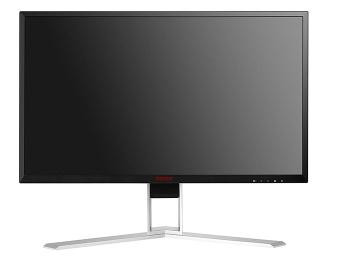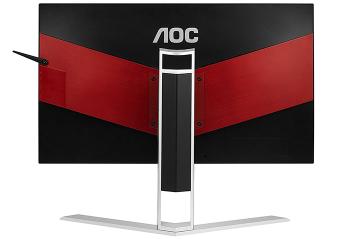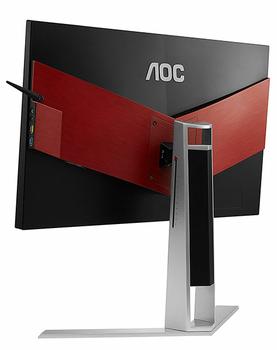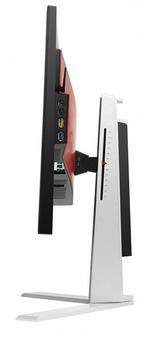Introduction
AOC has made significant strides in transitioning from a low-budget producer of computer screens to one that has an enviable range of cutting-edge, premium monitors. We know this after looking at the new offshoot, Agon series, recently.
Said Agon range is designed with gamers in mind, the company says, and that makes sense as the review screen had AMD FreeSync support from 30Hz through to 144Hz. However, upping its game, quite literally, AOC has jumped on the even higher refresh-rate bandwagon and released two 1080p monitors touting 240Hz capabilities, the Nvidia G-Sync AG251FG and AMD FreeSync-equipped AG251FZ, and we have the latter in for review.
Costing £400 at retail, or about £100 less than the Nvidia equivalent, AOC presents this Agon in familiar colouring and branding. That means a black-and-red aesthetic that works well, in our opinion.
Oftentimes, companies will skimp on the stand or materials. AOC does neither, as the AG251FZ uses a stylish metal base and column, though the setup is such that it needs to be screwed into the chassis at the Vesa point rather than clicking in, like most. Even so, you are up and running in under 10 minutes.
The bezel size is nothing to write home about - neither too chunky nor too thin - and the matte plastic means that fingerprints aren't obvious. On-screen controls are done the old-fashioned way, that is, via a number of buttons on the bottom-right, and we prefer this to the touch-sensitive controls on, say, a Philips.
Speaking of the OSD, the bundled QuickSwitch controller mimics the actions of the four buttons whilst also having three presets, though there is no way of programming your own. This little bit of kit is handy if you like flitting between different settings on a regular basis.
Of more interest to gamers are overdrive settings that effectively control motion blur at high speeds. You can set it to off (not recommended for gamers), weak, medium and strong, and we found that medium produced the most pleasing images at 240Hz.
Around back, AOC puts some thought into the gamer-centric details by extending the stand out to include a carry handle and a flick-out headphone holder. That red 'V' protrudes from the chassis enough to house the various ports and connectors.
Adjustments are decent, too, with 130mm of height, -20/20° of swivel and -5/23° of tilt. There's enough leeway to put the monitor into portrait mode. AOC decides to keep the power-brick separate, enabling a slimmer chassis form factor.
There's D-Sub, DVI, dual HDMI (2.0 and 1.4) and DisplayPort, whilst on the side AOC adds in two USB 3.0 (one is fast charging) on top of the two by the video connectors at the bottom.
Connecting the 24.5in screen at the preferred 240Hz requires the use of either the sole DisplayPort or HDMI 2.0, located next to it. Hooking up either DVI or the other HDMI limits the screen to 144Hz.
You may wonder at the need for such a high refresh rate when paired to a 1080p resolution. It turns out that it's a logical choice for the burgeoning eSporters who play titles such as Counter-Strike: Global Offensive, Overwatch, Dota 2 and League of Legends, et al.
The idea is to strip away what is regarded as superfluous image quality settings and run with the highest refresh rate possible, ensuring that the response rate of the monitor (1ms) and screen-refresh rate aren't the limiting factors during frenetic performance.
The monitor's FreeSync range is a wide 48-240Hz, typical of the 24.5in panel, and both the AMD and Nvidia versions use TN variants to achieve such lofty rates. In fact, they appear to be exactly the same screen albeit with different adaptive-framerates technologies employed.
So how good is the monitor from a 2D standpoint? Reasonable, actually, and the sample panel exhibited the usual washing out when viewing angles were pushed too far. However, as most gamers sit directly in front of the screen, the image quality is robust.






